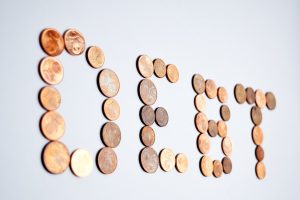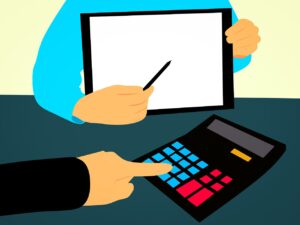Debt can feel like a heavy burden, creating stress and limiting your financial freedom. Whether you are dealing with credit card debt, student loans, medical bills or other forms of indebtedness, the journey to becoming debt-free is achievable with the right strategies and determination. In this comprehensive guide, Dollar Hand will explore a step-by-step plan to help you get out of debt and regain control of your financial life.

How To Get Out Of Debt Fast
Assess Your Debt
The first step in your journey to debt freedom is to understand the scope of your financial obligations. Take the time to gather all your debt-related information, including:
- Credit card balances
- Personal loans
- Student loans
- Car loans
- Medical bills
- Mortgage or rent arrears
- Any other outstanding debts
Once you have a clear picture of your debts, create a detailed list that includes the current balance, interest rates, minimum payments and the due dates for each debt. This list will serve as the foundation for your debt repayment plan.
Create a Budget
To effectively manage your debt, it is essential to create a comprehensive budget. A well-structured budget helps you track your income and expenses, providing a clear understanding of your financial situation. Consider the following steps:
- List your sources of income, including your salary, side gig earnings and any other income streams.
- Document all your monthly expenses, such as housing costs, utilities, groceries, transportation and entertainment.
- Differentiate between essential and non-essential expenses.
- Identify areas where you can cut back on discretionary spending.
- Allocate a portion of your income toward debt repayment.
By establishing a budget, you can gain control over your finances and redirect funds toward paying off your debts.
Prioritize High-Interest Debts
When you have multiple debts, it is crucial to prioritize them based on their interest rates. High-interest debts, such as credit card balances, should take precedence because they accrue interest at a faster rate, increasing the overall cost of the debt. Follow these steps:
- List your debts from highest to lowest interest rate.
- Continue making minimum payments on all your debts to avoid late fees.
- Allocate any additional funds from your budget to the debt with the highest interest rate.
- As you pay off the highest interest debt, move to the next one on the list.
By addressing high-interest debts first, you reduce your overall interest expenses and make quicker progress toward becoming debt-free.
Consider Debt Consolidation
Debt consolidation is a strategy that involves combining multiple debts into one with a lower interest rate. This approach simplifies debt management and can reduce the total interest you pay. Common methods of debt consolidation include:
- Balance Transfer Credit Cards: Some credit cards offer introductory 0% APR balance transfer offers. Transferring high-interest credit card balances to a 0% APR card can save you money on interest charges.
- Personal Loans: You can use a personal loan to consolidate multiple high-interest debts into a single loan with a fixed interest rate. Personal loans typically have lower interest rates than credit cards.
- Home Equity Loans: If you own a home, you may consider using a home equity loan or a home equity line of credit (HELOC) to consolidate debt. These options often offer lower interest rates due to the collateral involved.
It is important to be cautious when consolidating debt and to thoroughly review the terms and interest rates associated with the new loan or credit card.
Negotiate with Creditors
If you are facing financial hardship and struggling to make your monthly payments, don’t hesitate to reach out to your creditors. Many lenders are willing to work with borrowers to establish more manageable repayment plans. Consider these negotiation tips:
- Contact your creditors as soon as you foresee difficulty making payments.
- Explain your financial situation and the reasons for your hardship.
- Request temporary relief, such as lower interest rates, extended payment terms, or temporary forbearance.
- Be honest and open in your communication with creditors.
Negotiating with creditors can help you avoid falling further behind on payments and can make your debt more manageable during challenging times.
Build an Emergency Fund
To prevent future reliance on credit and to maintain your progress in paying down debt, it is crucial to establish an emergency fund. An emergency fund provides a financial cushion for unexpected expenses, such as medical bills, car repairs or home maintenance. You could:
- Aim to save at least three to six months’ worth of living expenses in your emergency fund.
- Start with a small savings goal and gradually increase it as you pay off debt.
- Keep your emergency fund in a separate, easily accessible savings account.
An emergency fund serves as a financial safety net and can help you avoid accumulating new debt when unexpected costs arise.
Automate Your Payments
Automating your debt payments ensures that you consistently make on-time payments, reducing the risk of late fees, increased interest rates and damage to your credit score. Set up automatic payments for all your minimum debt obligations and allocate any additional funds from your budget to the highest-priority debt. This method simplifies your debt repayment strategy and reduces the likelihood of missed payments.
Continue to Cut Expenses
While you are working to pay off your debt, maintain a frugal lifestyle by continually identifying areas where you can reduce expenses. Analyze your budget regularly and consider the following tactics:
- Eliminate non-essential spending, such as dining out, subscription services or impulse purchases.
- Shop strategically by using coupons, seeking sales and discounts, and buying generic brands.
- Review your insurance policies and consider bundling or adjusting coverage to lower premiums.
- Seek cost-effective alternatives for entertainment and leisure activities.
By consistently minimizing expenses, you free up more money to allocate towards debt repayment.
Monitor Your Progress
Tracking your progress is essential to staying motivated and on course to becoming debt-free. Use debt tracking tools, budgeting apps, or spreadsheets to monitor your debt balances and payments. Celebrate your milestones along the way, such as paying off individual debts, reaching a specific percentage of debt reduction, or achieving your emergency fund savings goal.
Seek Professional Help
If you are facing complex or overwhelming debt, it may be beneficial to seek advice from a certified credit counselor or financial advisor. These professionals can help you develop a tailored debt management plan, negotiate with creditors on your behalf and provide guidance on budgeting and financial literacy.

Final Thoughts
Remember that becoming debt-free is a journey that requires patience, discipline, and commitment. It may take time, but each step you take brings you closer to financial freedom and a brighter future. As you pay down your debts, you will not only improve your financial wellbeing but also gain valuable financial skills that will serve you well in the future.
Was this article helpful?
Justine is a full-time writer with lots of expertise and a wealth of experience in the financial world. In particular, she specializes in household income and consumer finance across the United States. Follow her articles for useful advice and top tips, guides on how to save money and lots more.
